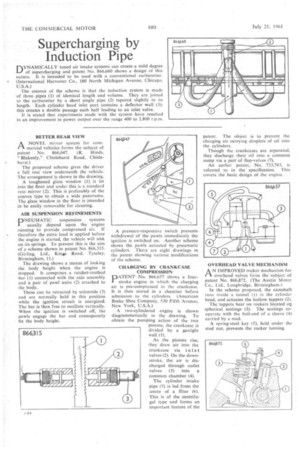CHARGING BY CRANKCASE COMPRESSION
Page 80

If you've noticed an error in this article please click here to report it so we can fix it.
PATENT No. 866.657 shows a fourstroke engine in which the charging air is pre-compressed in the crankcase. It is then stored in a chamber before admission to the cylinders. (American Brake Shoe Company, 530 Fifth Avenue, New York, U.S.A.)
A two-cylindered engine is shown diagrammatically in the drawing. To obtain the pumping action of the two pistons, the crankcase is divided by a gastight wall (1).
As the pistons rise, they draw air into the crankcase via inlet valves (2). On the downstroke, the air is discharged through outlet valves (3) into a common chamber (4).
The cylinder intake pipe (5) is led from the :entre of a filter (6). This is of the centrifugal type and forms an important feature of the patent. The object is to prevent the charging air carrying droplets of oil into the cylinders.
Though the crankcases are separated, they discharge their oil into a common sump via a pair of flap-valves (7).
An earlier patent, No. 733,743, is referred to in the specification. This covers the basic design of the engine.
























































































































